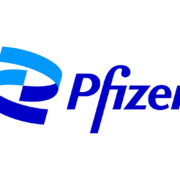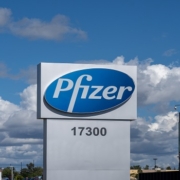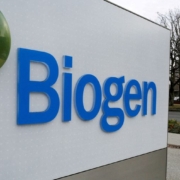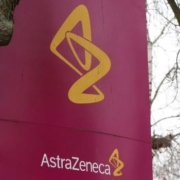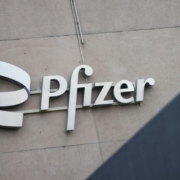CBER to launch Operation Warp Speed for rare diseases by year’s end
FDA/Regulatory, Health, R&DCBER to launch Operation Warp Speed for rare diseases by year’s end
Published: Apr 24, 2023
By Ana Mulero
BioSpace
Operation Warp Speed worked so well to accelerate the development of COVID-19 vaccines the FDA now has its sights set on a similar initiative for rare disease treatments.
“Leveraging learnings from Operation Warp Speed during the COVID-19 pandemic, FDA has started the preparatory work for launching a pilot later this year for rare diseases,” Peter Marks, director at the FDA’s Center for Biologics Evaluation and Research (CBER), told BioSpace. “The purpose of the project will be to attempt to further accelerate the pace of development of therapeutics for very small populations with very high medical need.”
The program aims to have cell and gene therapies for rare diseases enter the market as quickly as possible without compromising their safety and effectiveness, as well as to ensure these therapies are made available at viable prices for both manufacturers and patients.
“We may not make all the progress this year,” Marks said during a recent Alliance for a Stronger FDA webinar. “But I think we have a two- or three-year window here to really try to move things ahead.”
He added that this could involve using surrogate endpoints thought to predict clinical benefit to evaluate new products and relying on what’s known about one gene therapy to inform the regulatory review of another.
“Creating a programmatic entity with some energy behind it can generate momentum and help move things forward,” Emil Kakkis, president and CEO of Ultragenyx, told BioSpace. Ultragenyx is a California-based biotech focused on rare and ultrarare genetic diseases with six gene therapies in development.
“I like the direction Peter Marks and others are indicating they want to take,” Kakkis said. “Now it’s about how this program will be implemented.”
A Regulatory Recipe for Success
Marks told BioSpace that the development of innovative products can introduce unique challenges due to their unknown safety profiles, complex manufacturing technologies, the incorporation of novel devices and the use of cutting-edge testing methodologies.
There were a lot of unknowns with the development of COVID-19 vaccines during the launch of Operation Warp Speed in 2020. But these vaccines were still developed and made available to the general public in record time, saving an estimated 3.2 million lives and $1.15 trillion in the U.S. alone.
A cornerstone of Operation Warp Speed was for Marks and his vaccine experts to remain in constant contact with manufacturers on the regulatory requirements for submissions. Similarly, Marks said he hopes companies that participate in the upcoming Operation Warp Speed for Rare Diseases program will benefit from “increased and enhanced communication.”
“This pilot will allow ongoing informal interactions [with agency staff] via email or teleconference during the development of the product,” Marks said.
Because of the limited bandwidth stemming from the ongoing transition to the new Office of Therapeutic Products, which will house Operation Warp Speed for Rare Diseases, the program will likely “start with a couple of really high-need programs that we think could really benefit from constant contact,” Marks said.
He clarified, however, that the agency will ensure it is being transparent about how it is selecting programs via announcements in the Federal Register. “And then we’ll grow that program, especially if we see that it seems to be beneficial.”
Marks added that the FDA understands it may need to re-evaluate and modernize its current regulatory review approach to address the challenges unique to cell and gene therapies.
“We still have much to learn about how gene therapy products work, how to administer them safely, and whether they will continue to work properly in the body without causing adverse side effects over long periods of time,” Marks said. “For some of these products, we may need to accept some level of uncertainty around these questions at the time of approval.”
David Barrett, CEO of the American Society of Gene and Cell Therapy (ASGCT), agreed that the agency will need to remain flexible as this area of science develops.
“We’re in a period of rapid innovation in the field of cell and gene therapy,” he told BioSpace. “As clinical understanding quickly develops, the chemistry, manufacturing and controls framework needs to adjust to new demands by remaining flexible, risk-based and in tune with that development.”
International Harmonization and Economic Viability
Marks said he sees Operation Warp Speed for Rare Diseases as an opportunity to help advance CBER’s efforts to pursue international regulatory convergence for cell and gene therapies to increase the number of patients who may be treated with such therapies globally.
“While countries around the world have their own regulatory authorities, there is no uniform global quality safety standard for the evaluation and regulation of cell and gene therapy products,” Marks said. The agency is pursuing global harmonization of regulations for these products with international partners, global regulators and the World Health Organization.
The FDA “may also explore the possibility of concurrent collaborative review of applications with global regulatory partners in a manner similar to that being undertaken through Project ORBIS in the FDA’s Oncology Center of Excellence,” he added.
But Marks acknowledged that the regulatory environment was just one piece of the puzzle and that economic support is also needed for cell and gene therapies to succeed. These therapies are “struggling like salmon swimming upstream,” Marks said. Fixing this problem to achieve a commercially vibrant ecosystem means reducing the costs of production and getting the right regulatory environment, he added.
CBER hopes to salvage venture investment in cell and gene therapies that has dwindled in recent years, as manufacturers have given their programs back to academics or just dropped them entirely, Marks said during the webinar. The agency will do what it can “to reverse this [funding trend], getting toward a commercially viable ecosystem for any number of these products.”
In doing so, the program aims to accelerate the development of these therapies, Marks added. “I think it would be a shame if all we manage to do, every year in the next few years, is approve another two or three gene therapies—that’s a failure,” he said. “Success would be that we start to watch what should be, if not exponential, at least some logarithmic progression here toward more and more gene therapies being approved.”
Accelerating Approval to Meet Patient Need
Another aspect of Operation Warp Speed for Rare Diseases would be the use of the FDA’s accelerated approval pathway, Marks said. The agency “will encourage the use of biomarkers as surrogate endpoints to help facilitate the accelerated approval of gene therapies for serious or life-threatening conditions . . . affecting very small numbers of individuals.”
Though the pathway has recently become controversial, experts who spoke with BioSpace showed support for its use for this program.
“The process of medical evolution must start somewhere,” Kakkis said. “It’s vital to get a first drug—even an imperfect one—approved, so the next treatments can be even better.”
“A novel medicine approved using accelerated approval with a biomarker-based endpoint can be the first step toward better and better therapies through improvements and combinations,” Kakkis continued. “There has never been a rare disease product approved using the accelerated approval pathway that has later been pulled off the market, and I think it’s a natural fit for the agency to use this established pathway in creating Operation Warp Speed for Rare Diseases.”
Karin Hoelzer, director of policy and regulatory affairs at the National Organization for Rare Disorders (NORD), also supported the use of accelerated approval for rare disease therapies. But she stressed the importance of following through on post-marketing duties. “It’s important that the confirmatory trials and the post-marketing requirements are completed expeditiously,” she said.
Hoelzer also expressed concerns with the two- to three-year timeframe that Marks gave during the webinar. “Many of our patients don’t have that much time to wait,” she told BioSpace. “It’s a life and death situation for many of the rare disease patients impacted by more than 7,000 rare diseases.”
Simon Alfano, an associate partner at McKinsey & Company, agreed that time was of the essence, with less than 5% of known rare diseases having an approved therapy available.
“There remains a high unmet need for patients living with rare diseases,” Alfano told BioSpace.
Ana Mulero is a freelance writer based in Puerto Rico. She can be reached at [email protected] and @anitamulero.
Source: BioSpace


